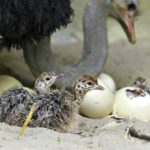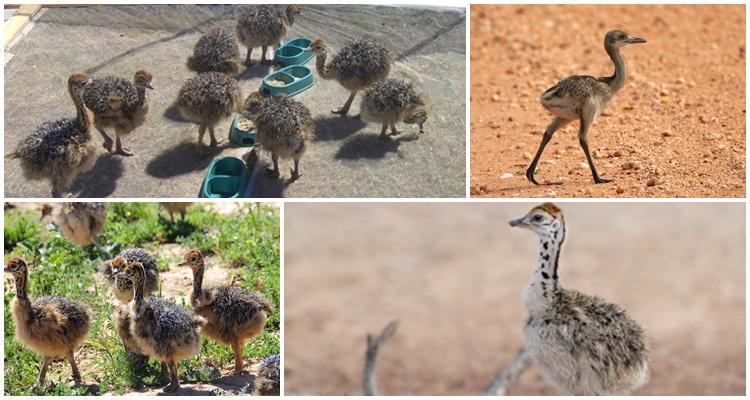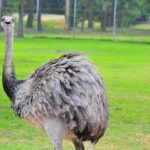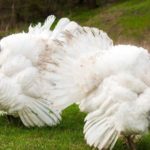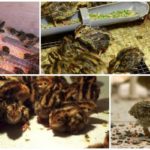Breeding ostrich chicks has many nuances, and the slightest inaccuracy in their compliance can lead to the death of the livestock. The ostrich is a southern bird, sensitive to cold weather and drafts, so it is necessary to ensure the most comfortable microclimate in the poultry house. Ostrich chicks are susceptible to pathogenic microorganisms, so due attention is paid to hygiene and timely vaccination.
Appearance of ostrich chicks
If the baby ostrich cannot hatch on its own at the appointed time, the egg shell will have to be carefully broken. Unlike chickens and ducks, ostrich chicks are born feathered and ready for independent life.
The dimensions of a newborn chick are about 20-30 cm in length. The legs are long and strong, the ostrich can develop high speed within a few hours after birth. For easy identification, lightweight plastic tags are often hung around the chicks' necks indicating their birth weight and hatching date.
Features of birth
In the wild, ostriches do not hatch eggs from start to finish, but prefer to bury them in hot sand, occasionally returning to the nest. In industrial settings, an incubator is most often used. One female can lay up to 60 eggs per season, so it makes sense to lay exactly this number of cells per bird. The chicks are born 42-43 days after the start of incubation.
Conditions of detention and care
The main condition for successfully raising ostrich chicks is the appropriate size of the room. It is recommended to calculate the area based on the parameters - at least one square meter per chick in the first month of life. As you grow older, this value increases to 5 square meters. meters, and adult birds will need 10 meters of space.
It is advisable to make the floor and walls made of wood or clay mixed with sawdust. This material is quite warm, close to natural conditions, and prevents the appearance of calluses and corns on the feet of birds. The windows are on the south side for sufficient sunlight. Lack of ventilation will lead to the accumulation of pathogenic bacteria, and the chicks will often get sick.The best thing is natural ceiling ventilation or regular ventilation of the room, but so that drafts do not form.
Cages are usually limited by mesh. The diameter of the cells should be such that ostriches cannot stick their heads between them. In the first few weeks of life, the temperature in the chicken coop is maintained at 32-33 degrees, and then gradually reduced to 20-25. Humidity – 60%.
Diet
During the first week of life, ostrich chicks lose weight using subcutaneous yolk reserves. This is normal. After a forced hunger strike, complementary feeding begins. Already from the second week of life, chicks can eat solid food. Ground alfalfa, which is considered a rich source of protein, is gradually introduced into the diet.
In the wild, chicks also peck the dung of adult birds, populating the intestines with the microflora necessary for digesting food.
Adult chicks are accustomed to special granulated food. Simply scatter it on the floor. Only after the young animals have become accustomed to eating it from the floor can the food be poured into the feeders. In the summer, 3-4 month old chicks are released onto pastures, especially clover and alfalfa. For the winter, be sure to make hay from these grasses.
What do ostrich chicks get sick of?
Ostriches are rather delicate birds, prone to diseases in unsuitable climate or conditions. Bird flu most often affects chicks. Typical symptoms are lethargy, apathy, refusal to feed, and clear discharge from the nose and eyes. Sick chicks are immediately isolated from the rest. There is no effective treatment, so it is best to vaccinate your livestock promptly.
Newcastle disease is transmitted to ostriches from chickens, so birds should not be kept together. The main signs are lack of coordination of movements.There is no specific treatment; there is preventive vaccination. The same symptoms can occur with hypoglycemia, a condition that occurs when there is not enough glucose in the diet. In particularly severe cases, intravenous injection of glucose helps.
Often helminthic parasites enter the chicks' bodies with green food. After an invasion, young ostriches gain weight poorly, their appetite worsens, and their body weight decreases. Veterinary pharmacies sell anthelmintic drugs. The dosage is selected based on the body weight of the chick.



